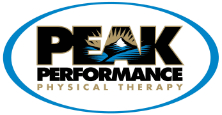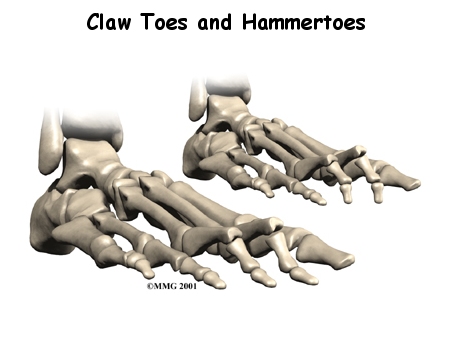
Claw Toes and Hammer Toes
Claw toe and hammer toe conditions are fairly common in cultures that wear shoes. In most cases, these problems can be traced directly to ill-fitting shoes.This guide will help you understand:
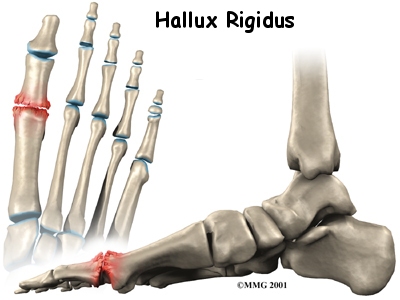
Hallux Rigidus
Hallux rigidus is a degenerative type of arthritis that affects the large joint at the base of the big toe (sometimes called the great toe). Degenerative arthritis results from wear and tear on the joint surface over time. The condition may follow an injury to the joint or, in some cases, may arise without a well-defined injury.This guide will help you understand:
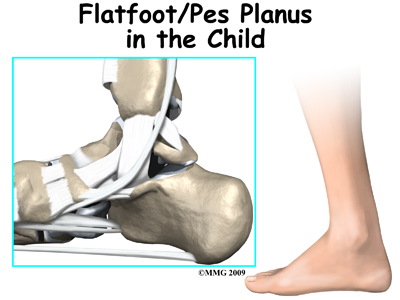
Congenital Flatfoot (Pes Planus) in Children
Flatfeet (also known as pes planus) describes a condition in which the longitudinal (lengthwise) and/or medial (crosswise) arches of the foot are dropped down or flat. The entire bottom of the bare foot is in contact with the floor or ground surface during standing, walking, and other weight bearing activities. Congenital means that the condition is present at birth in one or both feet. When only one foot is affected, the problem is referred to as unilateral pes planus or flatfoot. When both fee...
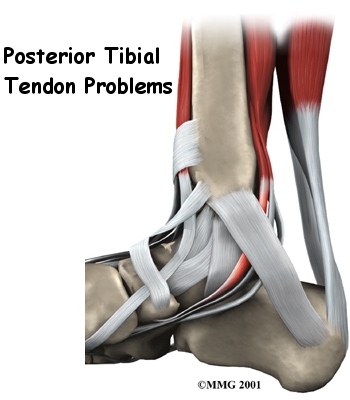
Posterior Tibial Tendon Problems Patient Guide
Due to the fact that we use our feet continuously, tendonitis in the foot is a common problem. One of the most frequently affected tendons is the posterior tibial tendon.
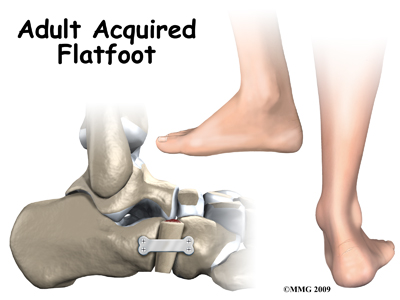
Adult Acquired Flatfoot Deformity
Adult acquired flatfoot deformity (AAFD) is a painful condition resulting from the collapse of the longitudinal (lengthwise) arch of the foot. As the name suggests, this condition is not present at birth or during childhood. It occurs after the skeleton is fully matured.In the past this condition was referred to as posterior tibial tendon dysfunction (or insufficiency) but the name was changed because the condition really describes a wide range of flatfoot deformities, not just those caused by p...
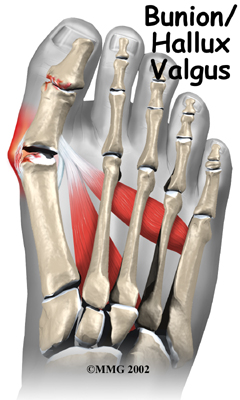
Guide to Bunions
Hallux valgus is a condition that affects the joint at the base of the big toe. The condition is commonly called a bunion. The bunion actually refers to the bump that grows on the side of the first metatarsophalangeal (MTP) joint. In reality, the condition is much more complex than a simple bump on the side of the toe. Interestingly, this condition almost never occurs in cultures that do not wear shoes. Pointed shoes, such as high heels and cowboy boots, can contribute to the development of hall...
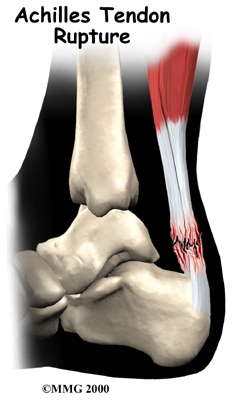
Achilles Tendon Problems Patient Guide
Problems that affect the Achilles tendon include tendocalcaneal bursitis, tendonitis/paratendonitis, tendinopathy/tendonosis, and Achilles tendon ruptures. Each of these conditions will be described and explained. These problems often affect athletes, especially runners, basketball players, and anyone engaged in jumping sports. They are also common, however, among both active and sedentary (inactive) middle-aged adults. Severe cases may result in a rupture of the Achilles tendon.
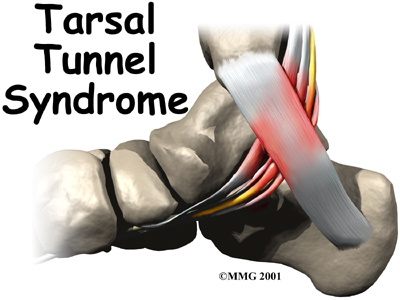
Tarsal Tunnel Syndrome
Tarsal tunnel syndrome is a condition that occurs from abnormal pressure on a nerve in the foot. The condition is similar to carpal tunnel syndrome in the wrist. The condition is somewhat uncommon and can be difficult to diagnose.
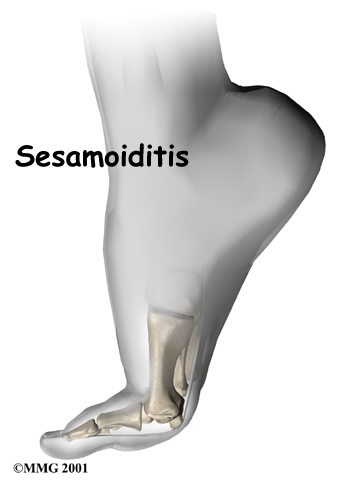
Sesamoid Problems
Two pea-sized bones, called sesamoids, are embedded within the soft tissues under the main joint of the big toe. Even though they are small in size, the sesamoids play an important role in how the foot and big toe work. If the sesamoids are injured, they can be a source of severe pain and disability.
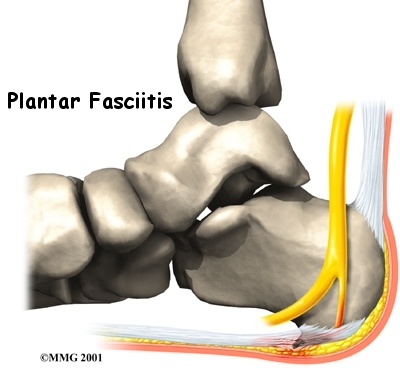
Plantar Fasciitis (Heel Pain)
Plantar fasciitis is a painful condition affecting the bottom of the foot. It is a common cause of heel pain and is sometimes called a heel spur. Plantar fasciitis is the correct term to use when there is active inflammation. Plantar fasciosis is more accurate when there is no inflammation but chronic degeneration instead. Acute plantar fasciitis is defined as inflammation of the origin of the plantar fascia and fascial structures around the area. Plantar fasciitis or fasciosis is usually just o...
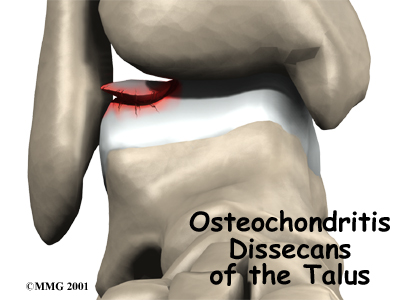
Osteochondritis Dissecans of the Talus
Osteochondritis dissecans (OCD) is a problem that causes pain and stiffness of the ankle joint. It can occur in all age groups. Most cases of OCD usually follow a twisting injury to the ankle and are actually fractures of the joint surface.
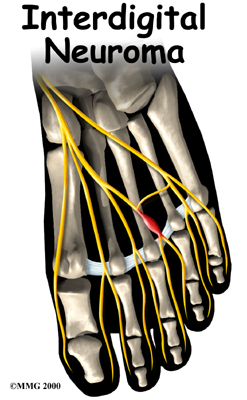
Interdigital Neuroma (Morton's Neuroma)
Interdigital neuroma (sometimes called a Morton's neuroma) is the medical term for a painful growth in the forefoot. The pain is most commonly felt between the third and fourth toes but can also occur in the area between the second and third toes. The exact cause of this problem is not clear. Some studies suggest that it is due to swelling, scarring, or a noncancerous tumor in one of the small nerves of the foot. The symptoms seem to be caused by irritation of the nerve that runs in the space be...
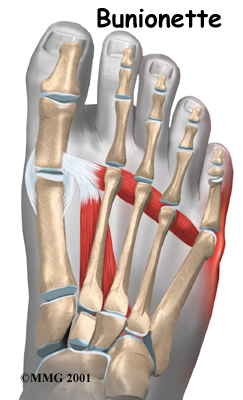
Tailor's Bunion
A bunionette is similar to a bunion, but it develops on the outside of the foot. It is sometimes referred to as a tailor's bunion because tailors once sat cross-legged all day with the outside edge of their feet rubbing on the ground. This produced a pressure area and callus at the bottom of the fifth toe.

Achilles Tendon Problems
Problems that affect the Achilles tendon include tendonitis, tendinopathy, tendocalcaneal bursitis, and tendonosis. Each of these conditions will be described and explained. These problems affect athletes most often, especially runners, basketball players, and anyone engaged in jumping sports. They are also common among both active and sedentary (inactive) middle-aged adults. These problems cause pain at the back of the calf. Severe cases may result in a rupture of the Achilles tendon.
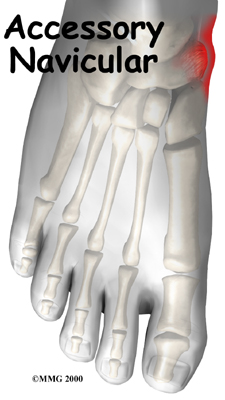
Accessory Navicular Problems
Not everyone has the same number of bones in his feet. It is not uncommon for both the hands and the feet to contain extra small accessory bones, or ossicles, that sometimes cause problems.
